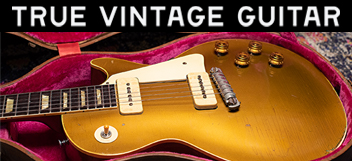Perregrintuk
New member
- Joined
- Mar 8, 2007
- Messages
- 14
Hey folks,
I love that forum, first of all.
My problem or thought is about the benefit of a new Les Paul wiring and pots from e.g. CTS TVT vs. the old standard wiring of Les Pauls or Japanese Les Pauls.
Is there really a difference if the wiring is like "the same" at the moment just with slightly different looking pots (but the same measurements)?
Thanks in advance!
I love that forum, first of all.
My problem or thought is about the benefit of a new Les Paul wiring and pots from e.g. CTS TVT vs. the old standard wiring of Les Pauls or Japanese Les Pauls.
Is there really a difference if the wiring is like "the same" at the moment just with slightly different looking pots (but the same measurements)?
Thanks in advance!



